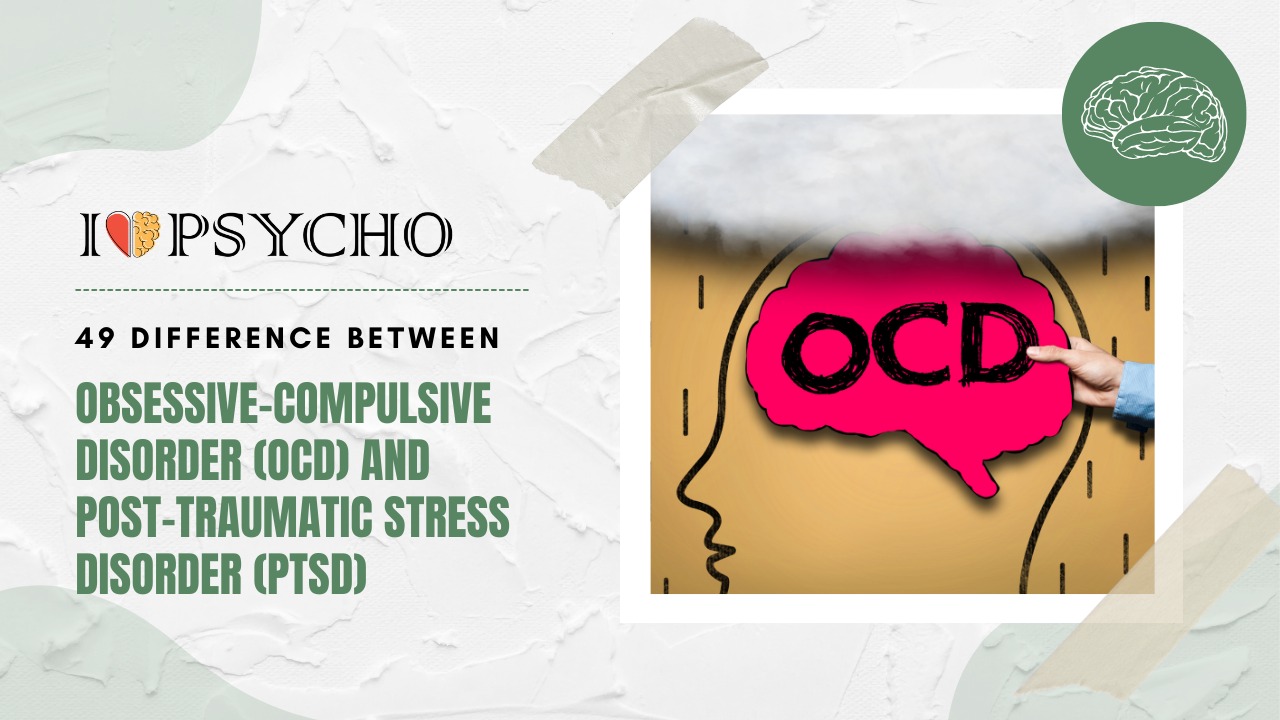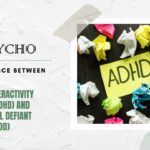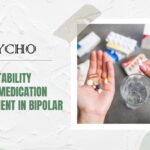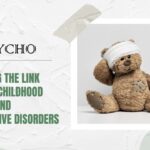OCD and PTSD are mental illnesses. They have certain symptoms, but their etiology, symptoms, and treatments differ. Correctly diagnosing and treating OCD and PTSD requires understanding their distinctions. Long-term anxiety disorder OCD is characterized by intrusive, repetitive thoughts (obsessions) and repeated activities or mental acts (compulsions) to feel better. Despite knowing they’re illogical, OCD sufferers typically feel driven to perform these behaviors. The illness can make daily tasks like cleaning, balance, and fear of injuring oneself or others difficult. OCD is treated with CBT and SSRIs.
However, stress causes PTSD. The battle, sexual assault, or a natural disaster might be life-threatening or unpleasant. PTSD symptoms include intrusion (reliving the trauma through flashbacks or nightmares), avoidance (avoiding reminders of the trauma), negative mood and thought (like feeling guilty or having strong negative beliefs), and heightened arousal (being easily startled or irritable). Extended exposure treatment, EMDR, and antidepressants can benefit PTSD sufferers.
OCD and PTSD differ in etiology and symptoms, however, they share some characteristics. Worry causes OCD’s unwelcome, disturbing thoughts that make individuals do things they don’t want to. Trauma causes PTSD, which causes people to repeat the unpleasant incident, avoid reminders of it, and become emotionally numb.
Each disease is treated differently. Both require therapy and drugs, but their purposes differ. Exposure and response prevention lowers OCD symptoms. PTSD therapy reduces everyday stress. OCD and PTSD share symptoms but have different causes, symptoms, and treatments. Mental health providers must correctly diagnose patients to help them choose the right treatment to improve their health and quality of life.
Also Read: Principles Of Genetics: Alleles, Inheritance, Linkage and more
|
S.No. |
Aspect |
Obsessive-Compulsive Disorder (OCD) |
Post-Traumatic Stress Disorder (PTSD) |
|
1. |
Core Symptoms |
Obsessions and compulsions |
Re-experiencing, avoidance, hyperarousal |
|
2. |
Underlying Mechanism |
Anxiety-driven, focused on reducing distress |
Trauma-driven, response to traumatic event |
|
3. |
Trigger |
Internal thoughts or external stimuli |
Traumatic event or exposure |
|
4. |
Obsessions |
Intrusive, distressing, repetitive thoughts |
Intrusive, distressing memories or flashbacks |
|
5. |
Compulsions |
Repetitive behaviors to reduce anxiety |
Avoidance behaviors and hyperarousal |
|
6. |
Focus of Anxiety |
Reducing perceived danger or discomfort |
Traumatic event and associated triggers |
|
7. |
Avoidance Behavior |
May avoid situations due to obsessions |
Avoidance of reminders of trauma |
|
8. |
Onset |
Typically in adolescence or early adulthood |
Following a traumatic event |
|
9. |
Trauma Component |
Not the defining factor |
Trauma event central to diagnosis |
|
10. |
Nature of Intrusions |
Thought-based, often irrational fears |
Trauma-related intrusive thoughts |
|
11. |
Rituals |
Compulsive behaviors to alleviate distress |
Avoidance behaviors and rituals |
|
12. |
Flashbacks |
Not a central symptom |
Core symptom: trauma-related flashbacks |
|
13. |
Physical Symptoms |
May or may not be present |
Hyperarousal, hypervigilance, anxiety |
|
14. |
Specific Triggers |
Focus on obsessions |
Trauma-related triggers and cues |
|
15. |
Impact on Life |
Can be disruptive to daily functioning |
Can significantly impair daily life |
|
16. |
Treatment Approaches |
Exposure and response prevention, medication |
Trauma-focused therapy, medication |
|
17. |
Cognitive Patterns |
Intrusive thoughts, cognitive distortions |
Negative thoughts related to trauma |
|
18. |
Trauma Focus |
Not applicable |
Central to diagnosis and symptoms |
|
19. |
Comorbidity |
Often coexists with anxiety disorders |
Can coexist with other disorders |
|
20. |
Re-experiencing Symptoms |
Not a core symptom |
Flashbacks, nightmares, intrusive thoughts |
|
21. |
Ritualized Behaviors |
Part of OCD compulsions |
Not a focus, but avoidance is common |
|
22. |
Physical Arousal |
Anxiety is often a central feature |
|
|
23. |
Trauma Exposure Therapy |
Not a primary treatment approach |
Central for processing trauma memories |
|
24. |
Focus on Self vs. Event |
Self-focused anxiety |
Event-focused anxiety and reactions |
|
25. |
Triggered by Specific Memories |
Not a defining feature |
Triggered by trauma-related memories |
|
26. |
Intrusive Thoughts vs. Memories |
Intrusive thoughts about various fears |
Intrusive memories of traumatic event |
|
27. |
Therapy Focus |
Reducing obsessions and compulsions |
Processing traumatic memories |
|
28. |
Duration |
Variable, may lessen over time |
|
|
29. |
Prevalence |
Approx. 1-2% of the population |
Varies based on exposure and risk |
|
30. |
Severity |
Can vary from mild to severe |
Can vary from mild to severe |
|
31. |
Anxiety Driven vs. Trauma Driven |
Anxiety-driven, distress reduction |
Trauma-driven, response to trauma |
|
32. |
Treatment Duration |
Long-term management |
Variable, depending on treatment |
|
33. |
Cognitive Distortions |
Obsessive, irrational fears |
Negative beliefs related to trauma |
|
34. |
Ritualized Coping Mechanisms |
Compulsions to alleviate distress |
Avoidance behaviors and hypervigilance |
|
35. |
Sleep Disturbances |
May or may not be present |
Common: nightmares, insomnia |
|
36. |
Fear of Impending Harm |
Often irrational fears of harm |
Trauma-related fear and danger perception |
|
37. |
Hyperarousal Symptoms |
Less pronounced |
Core feature: heightened arousal |
|
38. |
Hyperresponsiveness |
Not a defining feature |
Hyperresponsiveness to triggers |
|
39. |
Repetitive Mental Acts |
Obsessive thinking and anxiety reduction |
Repeatedly reliving trauma in thoughts |
|
40. |
Therapeutic Exposure |
Exposure to feared situations or thoughts |
Exposure to traumatic memories |
|
41. |
Avoidance vs. Rituals |
Avoidance driven by anxiety |
Rituals driven by compulsions |
|
42. |
Trauma Processing |
Not applicable |
Core to treatment of PTSD symptoms |
|
43. |
Triggers in Everyday Life |
Often tied to internal obsessions |
Triggers related to trauma exposure |
|
44. |
Focus on Potential Harm |
Often related to irrational fears |
Focus on trauma event and its impact |
|
45. |
Sense of Threat |
Perceived threat often irrational |
Real or perceived threat from trauma |
|
46. |
Rituals vs. Avoidance |
Rituals as compulsions |
Avoidance behaviors as coping mechanism |
|
47. |
Intrusive Thoughts as Triggers |
Obsessions may trigger anxiety |
Intrusive thoughts related to trauma |
|
48. |
Cognitive Control Strategies |
Efforts to control anxiety and distress |
Efforts to manage traumatic memories |
|
49. |
Secondary Effects |
Impacts daily life through compulsions |
Impairs daily life through avoidance |
Also Read: 39 Difference Between Bipolar Disorder and Major Depressive Disorder (MDD)
Frequently Asked Questions (FAQs)
Q.1 What is the main difference between OCD and PTSD?
Obsessions and compulsions, which reduce anxiety, define OCD. These comfort-seeking activities are often unrelated to the triggering event. After a trauma, PTSD causes flashbacks, nightmares, trigger avoidance, and emotional numbness.
Q.2 Can someone have both OCD and PTSD?
OCD and PTSD can coexist. Each illness has its own diagnosis and therapy. A mental health practitioner must carefully analyze and treat both disorders.
Q.3 What causes OCD and PTSD?
OCD and PTSD have unknown origins. Genetic, neurological, and environmental factors cause OCD. Serotonin abnormalities contribute to OCD. PTSD, on the other hand, results from trauma that overwhelms coping abilities. Genetics, brain changes, and environmental stresses cause PTSD.
Q.4 How are OCD and PTSD treated?
Cognitive-behavioral treatment (CBT), especially exposure and response prevention (ERP), is used to treat OCD. SSRIs can also relieve symptoms. Trauma-focused therapies like extended exposure therapy and EMDR assist people cope with PTSD. Antidepressants can treat PTSD.
Q.5 Can OCD or PTSD be cured?
There is no “cure” for OCD or PTSD, although both conditions can be treated to reduce symptoms and enhance the quality of life. Therapy and medicines help many OCD and PTSD sufferers find long-term recovery. Early and persistent therapy improves results.









